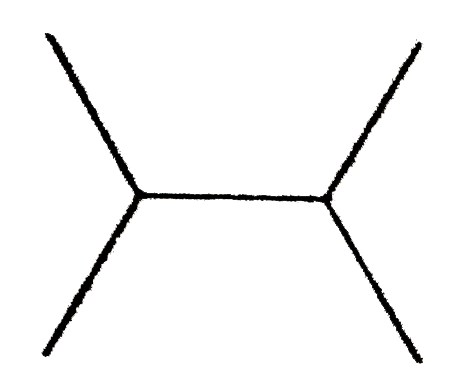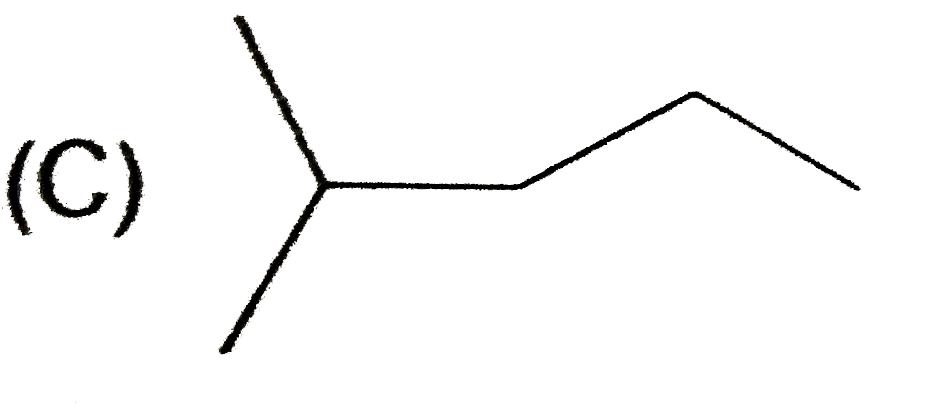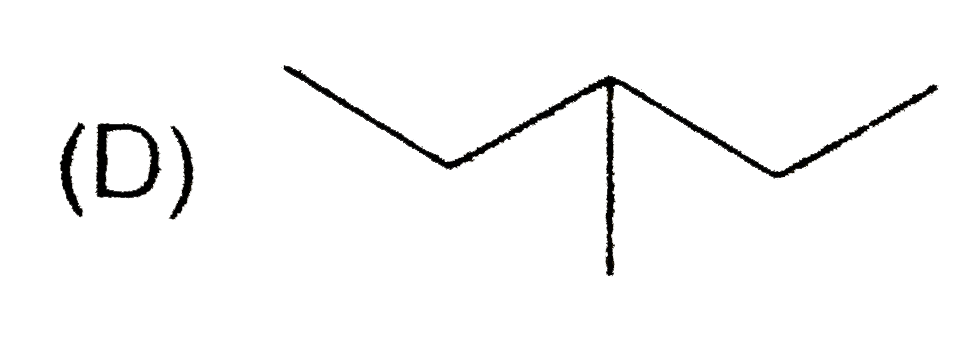CH3CH2CH2Cl+CH3C∣ClHCH3Na−−−−→dry ether Products.
Which of te following is not a product of above reaction?




The correct Answer is:D
To solve the question regarding the products formed from the reaction of propyl chloride (CH₃CH₂CH₂Cl) and isopropyl chloride (CH₃ClC(CH₃)H) in the presence of sodium in dry ether, we will follow these steps:
Step 1: Identify the Reaction Type
This reaction is known as the Wurtz reaction, which involves the coupling of alkyl halides in the presence of sodium metal to form higher alkanes.
Hint: Remember that Wurtz reaction typically leads to the formation of symmetrical alkanes.
Step 2: Write the Reactants
The reactants are:
1. Propyl chloride: CH₃CH₂CH₂Cl
2. Isopropyl chloride: CH₃C(Cl)(CH₃)
Step 3: Determine the Free Radicals
In the presence of sodium, the halogen atoms (Cl) are removed, leading to the formation of free radicals:
1. Propyl free radical: CH₃CH₂CH₂• (from propyl chloride)
2. Isopropyl free radical: CH₃C•(CH₃)
Step 4: Possible Coupling Reactions
Now, we can consider the possible combinations of these free radicals:
1. Propyl + Propyl:
- CH₃CH₂CH₂• + CH₃CH₂CH₂• → CH₃(CH₂)₃CH₃ (n-hexane)
2. Isopropyl + Isopropyl:
- CH₃C•(CH₃) + CH₃C•(CH₃) → (CH₃)₂C(CH₃)₂ (2,3-dimethylbutane)
3. Propyl + Isopropyl:
- CH₃CH₂CH₂• + CH₃C•(CH₃) → CH₃CH₂C(CH₃)(CH₂) (2-methylpentane)
Step 5: List the Products
From the above combinations, the products formed are:
1. n-Hexane (from propyl + propyl)
2. 2,3-Dimethylbutane (from isopropyl + isopropyl)
3. 2-Methylpentane (from propyl + isopropyl)
Step 6: Identify the Incorrect Product
The question asks which of the following is not a product of the reaction. Based on the analysis, we have:
- n-Hexane
- 2,3-Dimethylbutane
- 2-Methylpentane
If there is an option that does not match any of these products, that will be the answer.
Conclusion
After analyzing the products formed, we conclude that the option that is not a product of the reaction is Option D.
---
This reaction is known as the Wurtz reaction, which involves the coupling of alkyl halides in the presence of sodium metal to form higher alkanes.
The reactants are:
1. Propyl chloride: CH₃CH₂CH₂Cl
2. Isopropyl chloride: CH₃C(Cl)(CH₃)
In the presence of sodium, the halogen atoms (Cl) are removed, leading to the formation of free radicals:
1. Propyl free radical: CH₃CH₂CH₂• (from propyl chloride)
2. Isopropyl free radical: CH₃C•(CH₃)
Now, we can consider the possible combinations of these free radicals:
1. Propyl + Propyl:
- CH₃CH₂CH₂• + CH₃CH₂CH₂• → CH₃(CH₂)₃CH₃ (n-hexane)
2. Isopropyl + Isopropyl:
- CH₃C•(CH₃) + CH₃C•(CH₃) → (CH₃)₂C(CH₃)₂ (2,3-dimethylbutane)
3. Propyl + Isopropyl:
- CH₃CH₂CH₂• + CH₃C•(CH₃) → CH₃CH₂C(CH₃)(CH₂) (2-methylpentane)
From the above combinations, the products formed are:
1. n-Hexane (from propyl + propyl)
2. 2,3-Dimethylbutane (from isopropyl + isopropyl)
3. 2-Methylpentane (from propyl + isopropyl)
The question asks which of the following is not a product of the reaction. Based on the analysis, we have:
- n-Hexane
- 2,3-Dimethylbutane
- 2-Methylpentane
After analyzing the products formed, we conclude that the option that is not a product of the reaction is Option D.
Similar Questions
Knowledge Check
- Question 1 - Select One
Ph−CH2−CH∣D−CH3Br2/hv−−−−→
Product of the above reaction will be :ADiastereomersBRacemic mixtureCMesoDConstitutional isomers - Question 2 - Select One
CH3CH2CH2CH3Cl2−−→hvA+B(monochlorination products)
The approximate ratio of percentage yields of A and B formed in the above reaction isA50:50B72:28C45:55D60:40
C2H5Br+CH3−CH∣CH3−Br(Na)dryether−−−−−−−−→'P' (major)
Which is not product 'P'-View SolutionCH3CH2C∣CH3=CHCH3Reagent−−−−→CH3CH2CH∣CH3OH∣CHCH3
Which reagent forms the above organic product as the single product in the above reaction?View SolutionCH3−Br+NaO−CH3∣C∣CH3−CH3→ ?
The product isView Solution2CH3−CH3∣C∣CH3−CHO+NaOH→ The product is
View SolutionCH3−CH3| C | CH3−COOH+Br2Red P−−→[Product]
The product of the above reaction is -View SolutionCH3−CH3∣C∣CH3−CH=CH−CH3H−Cl−−−→ ?
View Solution

